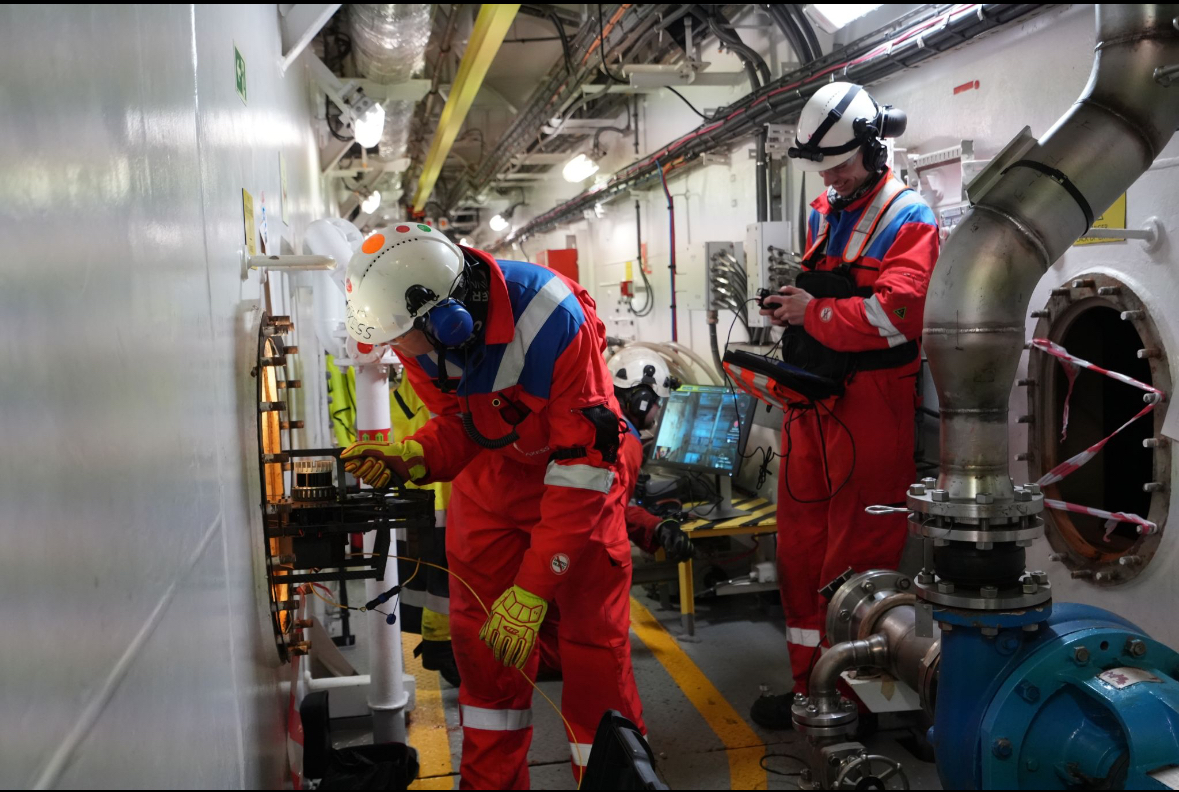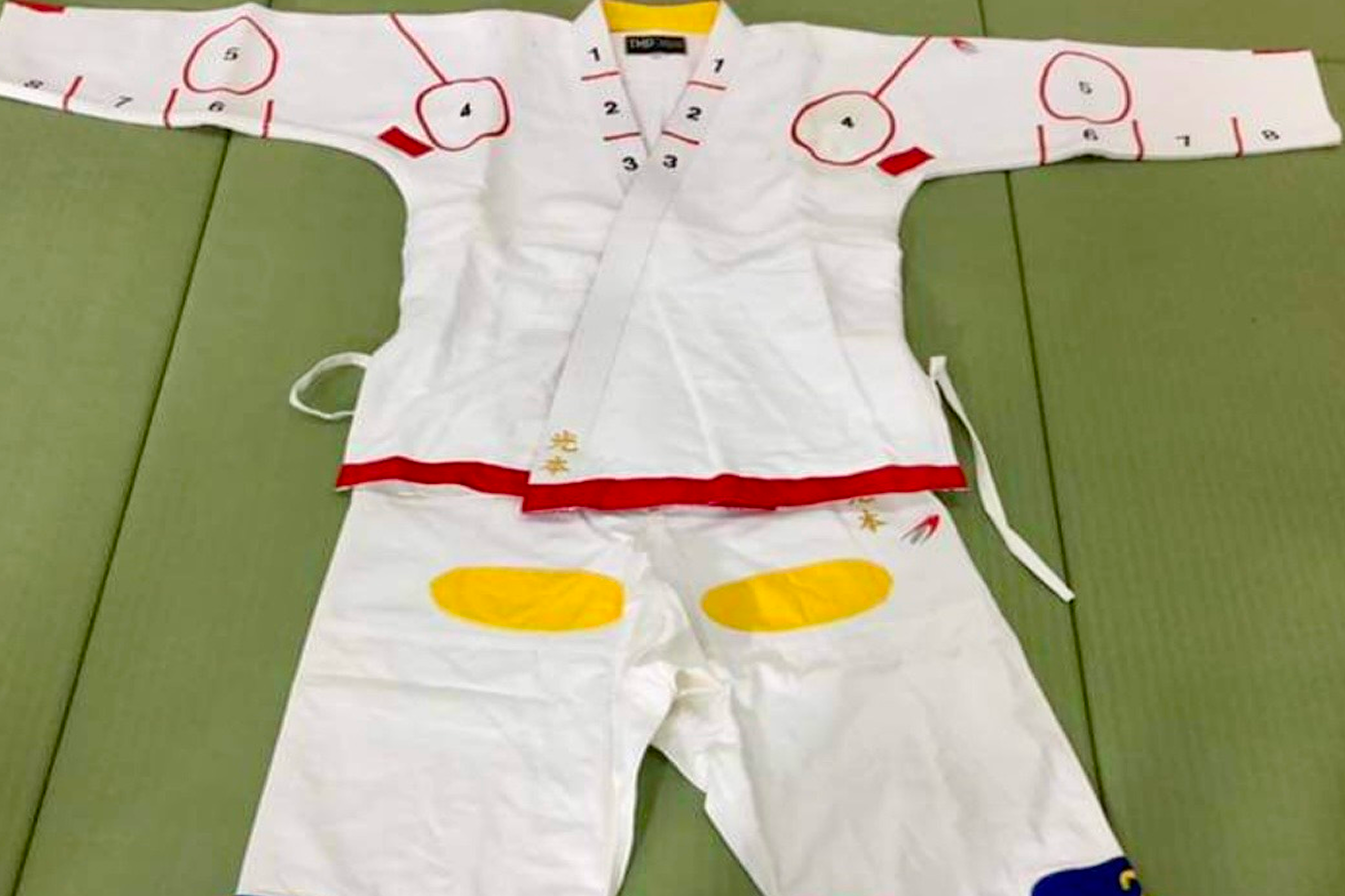3D View app
As a User Experience Designer at Axess Digital, I had the opportunity to work on the 3D View inspection app—an innovative solution tailored to enhance the inspection process in complex industrial environments. As part of the suite of applications within the inspection software, Bridge (inspection software), the purpose of 3D View is to enable seamless collaboration and sharing of 3D models, eliminating the need for specialised hardware or software. Application is launched in 2023.
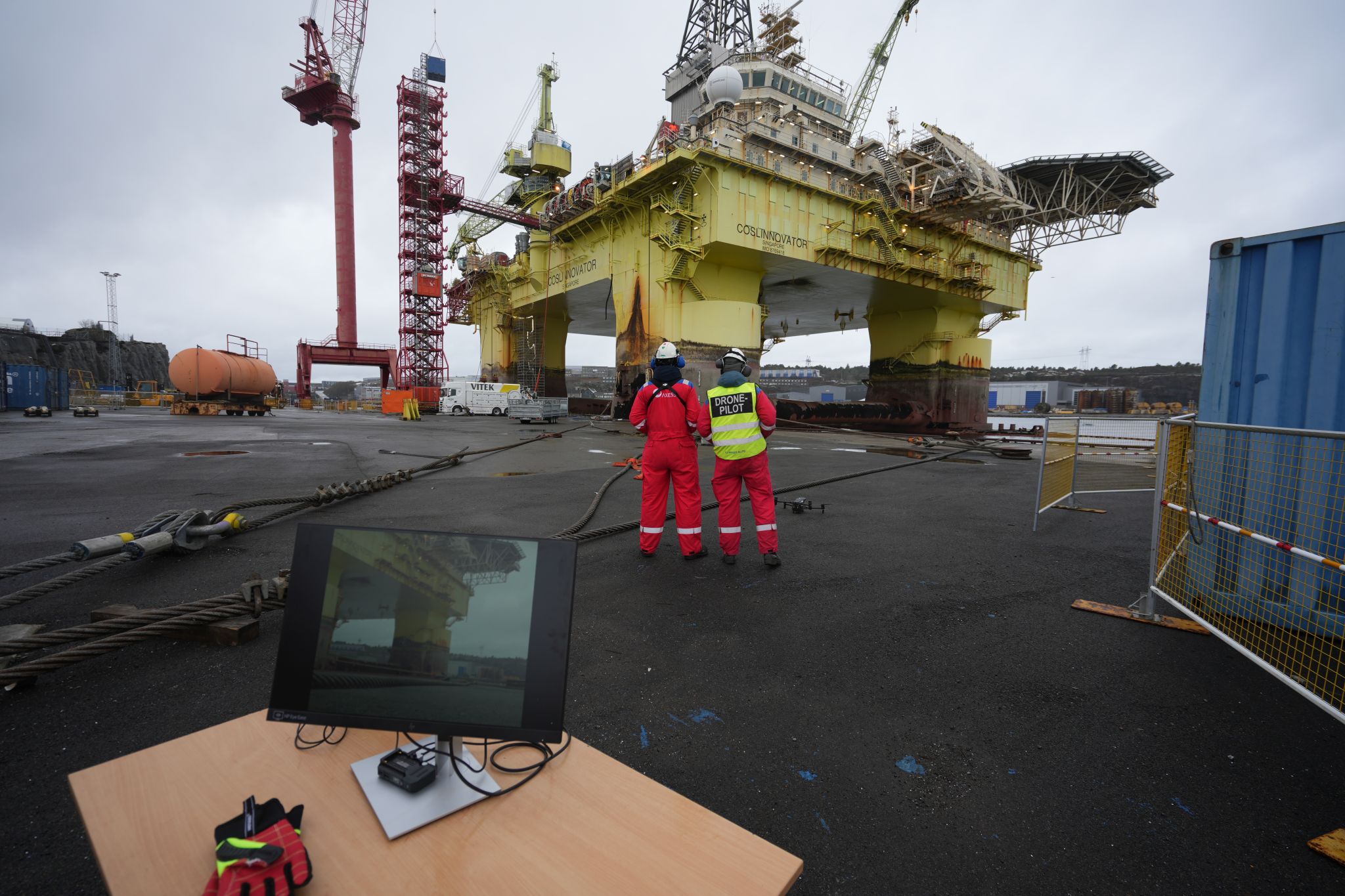
Background
Imagine a world where the safety of countless lives rests on the shoulders of inspectors manually sifting through thousands of images, searching for minute cracks in a vast bridge structure. This was the reality before our team stepped in. Inspectors spent countless hours manually reviewing thousands of images, often missing subtle flaws. Traditional inspections were a bulky, inefficient, and error-prone process – the potential for catastrophic oversights. This project was a transformative experience. I literally put myself in the inspectors' shoes, spending days on site, learning alongside them despite having no prior experience with drones or 3D modeling. The immense challenges I faced ultimately led to a significant expansion of my skills and a profound understanding of the user's needs.
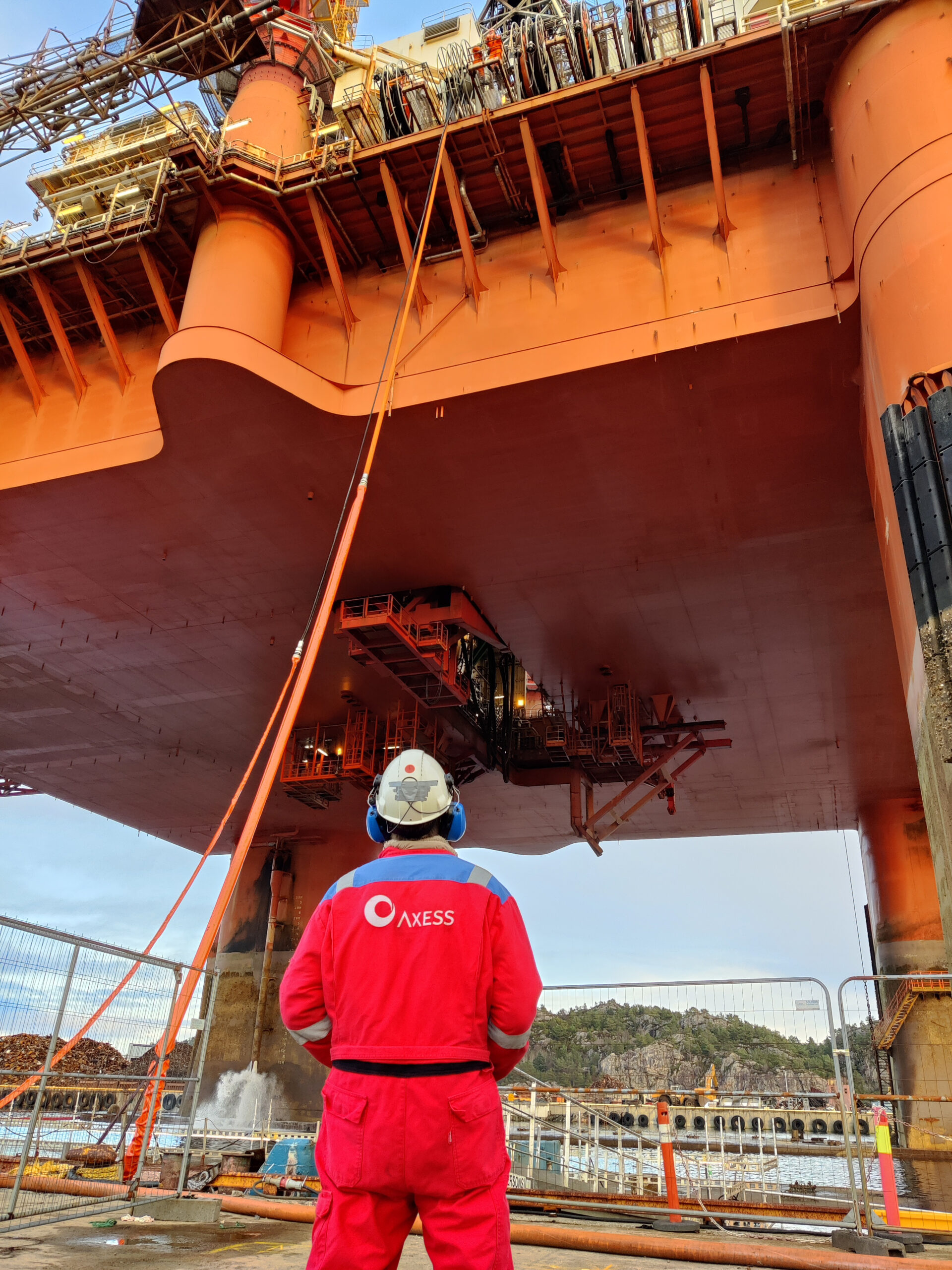
Research: Understanding user needs
To ensure the 3D View inspection app would effectively meet user needs, it was essential to start with thorough research. The primary goals were to understand the challenges faced by inspectors in the field, identify gaps in current inspection processes.
Defining a problem
Key insights from this research:
Idea process
Product development is often more chaotic than we expect. Instead of following a simple path from research to prototype, I shifted my focus to solutions. I envisioned using drones for inspections, which would capture high-resolution images and create 3D models of assets. AI algorithms would then analyze these models to identify defects and highlight pressing issues.
While testing early prototypes of the applications, we encountered issues with the clarity of the images and models. Recognizing that we had a lot of holes in our technology and development, my team and I embraced the challenges. To stay connected with our users, I organized regular sessions for them to share their experiences and feedback on the drone and 3D features. This direct input was invaluable, allowing us to make quick adjustments and effectively improve our technology.
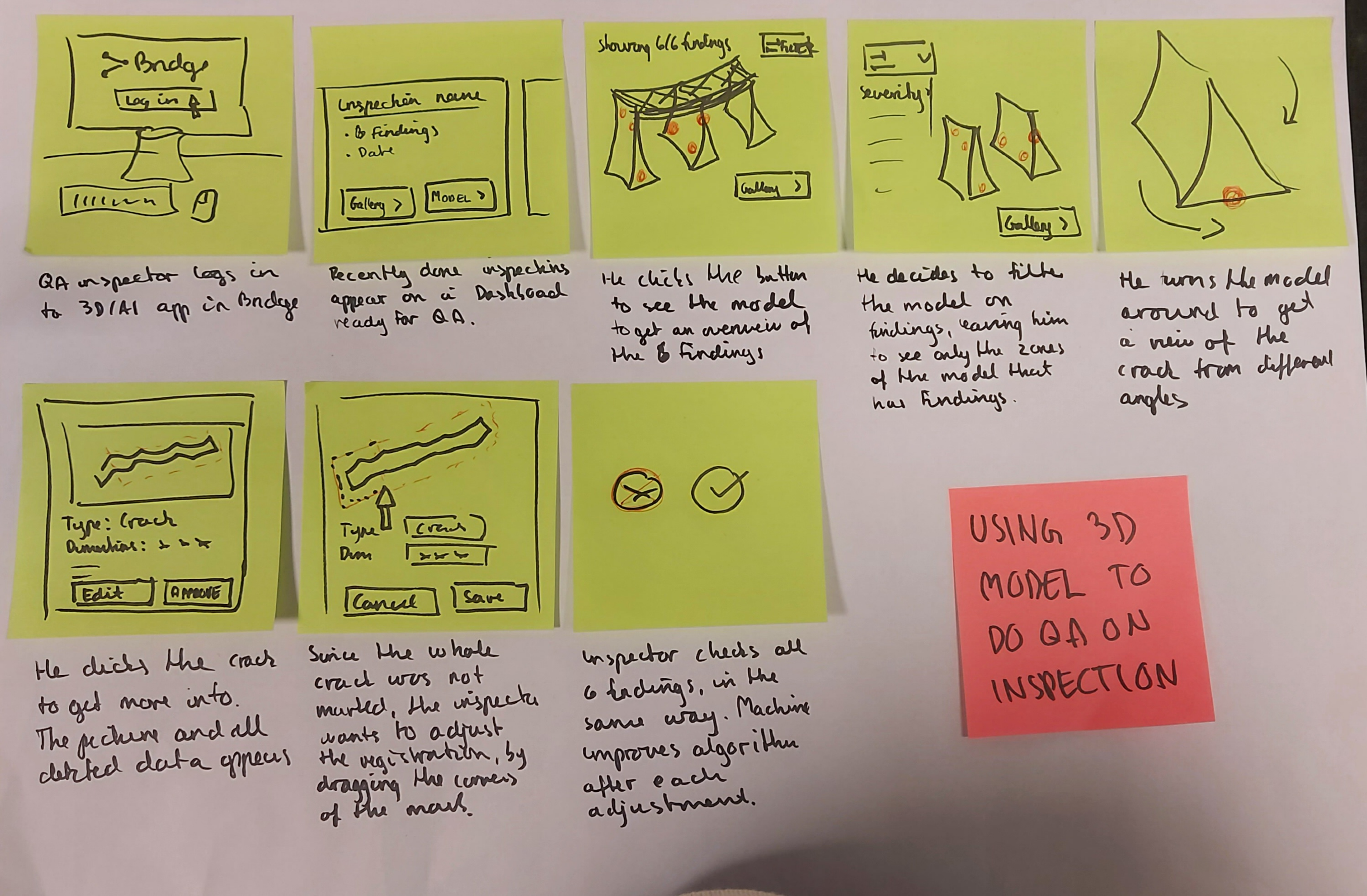
Final product
After months of hard work and collaboration, we were thrilled to unveil 3DView. With 3DView, clients and their stakeholders can communicate effectively regarding their assets and inspection findings, regardless of their location or device. Users can access the application by logging into Bridge using any device with a web browser, such as a laptop, tablet, or mobile, at their own convenience.
The application supports point clouds and meshes with textures and images, allowing for detailed visualisation of assets. This feature facilitates comprehensive inspections, assessments and planning for future maintenance. Moreover, the use of 3D models for inspections can significantly improve efficiency by eliminating the need for physical access to the assets. Furthermore, findings can be added and reviewed directly within the 3DView application itself.
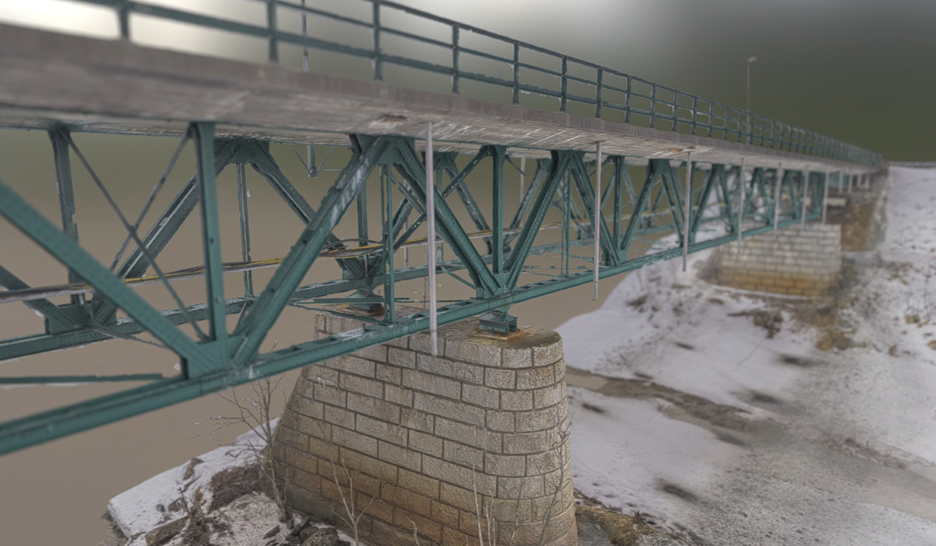
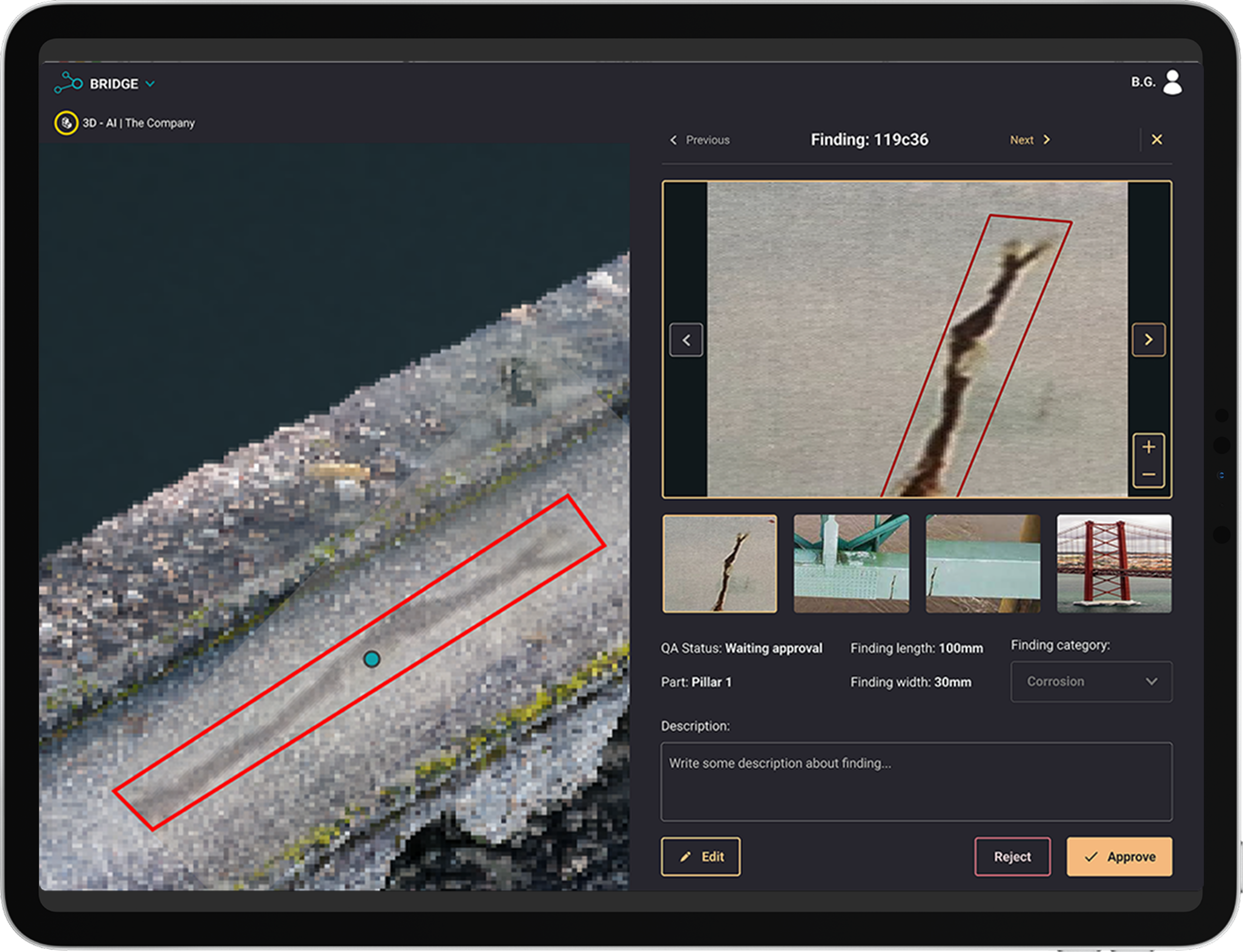

The AI engine was developed to enhance efficiency by streamlining the inspection process. Upon uploading data to the application, the AI identifies defects before users verify the accuracy. This is an ongoing process, where any corrections made by users will be utilised as training data for developing new AI models.
Additional enhancements include the capability to view images in a carousel and the option to filter images with annotations from users or AI. It is also possible to divide the 3D models into zones for more precise reporting and to assist in monitoring inspection progress. The solution also pinpoints the locations of defects in the images on the corresponding 3D model, enabling the identification of unique defects and the calculation of lengths and areas. This approach facilitates the efficient evaluation of defects suggested by the AI, and enables users to conduct manual inspections on specific parts of the 3D model. All processes and data are run and stored in Microsoft Azure, offering the best security and reliability within the industry.
Full workflow you can check it on video
Outcomes and lessons learned
Looking back at my experience with the 3DView application, I see that everything is truly a work in progress (WIP). Product development isn’t a straight line; it’s often messy and full of surprises. Embracing this idea helped me stay flexible and adapt as we tried out new ideas.
Each piece of feedback we received made our product better and showed me that I could take risks without worrying too much about getting it perfect right away. Working closely with users was key; their input shaped the app to meet their real needs. Involving them in this process created a sense of shared ownership and excitement.
I also discovered that users enjoy being part of the journey. They expect ongoing updates and improvements, which made me realize how important their feedback is for our success. In the end, I learned that having a WIP mindset can change how we create solutions.
Some of my last projects
